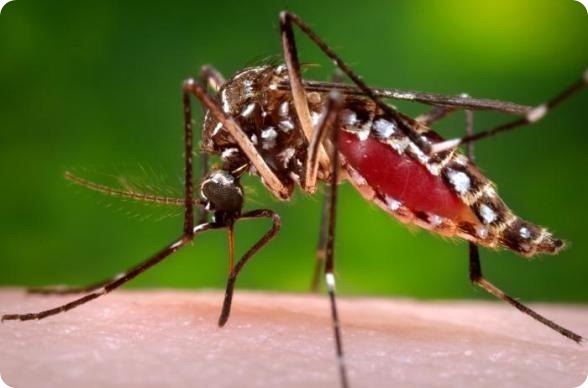Daily temperature fluctuations, not just high temperatures, play a significant role in the transmission of dengue, a deadly mosquito-borne disease that strikes millions of people in tropical and subtropical countries, according to ground-breaking research led by French, Thailand and U.S. scientists and conceived by medical entomologist Thomas Scott of the University of California, Davis.
“The size and pattern of fluctuations in daily temperature have a large effect on pathogens transmitted by mosquitoes,” said lead author Louis Lambrechts of the Institut Pasteur, France, who did postdoctoral research in the Scott lab.
The influence of average temperatures on dengue virus transmission has long been known–the higher the temperature, the more efficient the virus transmission—but this is the first study linking temperature fluctuations to the transmission of the disease.
The research findings, published today (April 18, 2011) in the Proceedings of the National Academy of Sciences, help explain why dengue increases during certain times of the year in “tropical areas where mosquito-borne diseases inflict an enormous burden on human health,” Scott said. 
Dengue, transmitted by the daybiting Aedes aegypti mosquito, globally infects 50 to 100 million people yearly. At risk are some 2.5 to 3 billion people, primarily in tropical and sub-tropical countries. The most severe form of the disease, dengue haemorrhagic fever (DHF), strikes half a million a year and kills an estimated 5 percent, according to the Centers for Disease Control and Prevention.
Lambrechts and Scott described the findings as “exciting” because they provide a new and more biological compelling explanation for seasonal forcing in dengue; that is, increased number of dengue cases during the same time each year.
Better understanding of seasonal changes in temperature fluctuations should lead to improved surveillance and prevention, they said.
The research was inspired from temperature profiles recorded in rural Thai villages near Mae Sot, Tak Province, where all four virus serotypes of dengue are prevalent. Dengue is endemic to Thailand.
The researchers investigated the effect of realistic temperature profiles (cooler temperatures at night and warmer temperatures during the day) on the capacity of mosquitoes to transmit dengue virus. “We found that the range of temperature fluctuations was inversely related to vector susceptibility to virus infection and vector survival,” Lambrechts said.
Scott said the study helps to explain a long-standing enigma: “What are the underlying causes of seasonal fluctuations in dengue incidence?” Experiments showed that mosquitoes die faster and are less susceptible to virus infection under large temperature swings, which is typical of the low dengue season, than under moderate temperature variation, which is typical of the high dengue season.
In the past, researchers used only constant temperatures, not short-term fluctuations, in experimental studies.
Scott, a noted dengue expert whose goal is to save lives through research, surveillance and implementation of disease prevention strategies, has a longstanding interest in the factors that drive seasonal and annual fluctuations in diseases caused by mosquito-transmitted pathogens. “Traditional explanations for the seasonal increase in dengue are not consistent with my experience in Thailand, Peru, and Puerto Rico,” Scott said.
During his post-doctoral training with professor Scott, Lambrechts performed a large experiment and then confirmed those results with a different experimental system at the Institut Pasteur where he is now setting up his own research team.
The PNAS-published research, titled “Impact of Daily Temperature Fluctuations on Dengue Virus Transmission by Aedes aegypti,” involved collaborations with the laboratories of Laura Kramer (Wadsworth Center, New York State Department of Health in Slingerlands, N.Y.) and Matthew Thomas (Center for Infectious Disease Dynamics, Department of Entomology at Pennsylvania State University).
Other co-authors were Krijn P. Paaijmans, Center for Infectious Disease Dynamics, Pennsylvania State University; Thanyalak Fansiri, Department of Entomology, Armed Forces Research Institute of Medical Sciences, Bangkok, Thailand; and Lauren B. Carrington of the Scott lab.
The research drew grant support from the National Science Foundation Ecology of Infectious Disease program, and the National Institutes of Health. Scott received support from the Research and Policy for Infectious Disease Dynamics (RAPIDD) program of the Science and Technology Directorate, Department of Homeland Security, and Fogarty International Center, National Institutes of Health. Lambrechts received support from the French Agence Nationale de la Recherche.
Research posted at http://entomology.ucdavis.edu/news/dengueresearchpnas2011.html